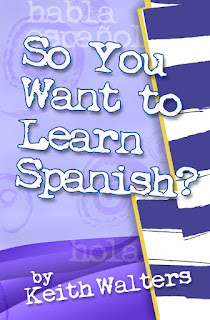A while ago, I covered regular -ar, -er, and -ir verbs in
the present tense. Today, I would like to cover what we call, irregular verbs
-- specifically the "stem-changing" verbs in Spanish. Please refer
back to my post on regular verbs in the present tense before continuing on with
this post. It will be a good refresher for you. You can find that post
here.
There are three types of stem changing verbs in Spanish:
- E to IE
- E to I
- O to UE
The term, stem-changing, comes from the flower analogy. The
entire infinitive form of the verb (for example: hablar)
is considered the root. All plants must have roots in which they grow and
establish a beautiful flower. The stem on the flower supports the plant above ground. The stem of a verb does the same thing for the verb which usually does not change: habl- in the case of hablar. Consider the –ar part of the verb to be the buds or the actual flowers each very distinct from one another and yet all part of the same plant. Each of the various forms is different from another which are all part of the same verb.
Now in stem-changing verbs, the stem of the verb has a
change that takes place when you conjugate it to the various forms. For all
stem-changing verbs, the following forms will change: Yo (I), Tú (You
(familiar)), Vd. (El, Ella) (You (He, She)), Vds. (they, you all). The two
forms that do not change the stem are the Nosotros (We) and Vosotros (You all
(familiar)). Below I will take you through the various stem-changing verbs with examples. The examples have the location of the change (or no change) in bold and underlined. Remember that each vowel is pronounced!
1.
Here’s an example for E to IE verbs:
-ar
|
-er
|
-ir
|
Pensar
(to think)
|
Querer
(to want, love)
|
Mentir
(to lie)
|
Pienso
Piensas
Piensa
|
Quiero
Quieres
Quiere
|
Miento
Mientes
Miente
|
Pensamos
Pensáis
|
Queremos
Queréis
|
Mentimos
Mentís
|
Piensan
|
Quieren
|
Mienten
|
Other verbs that work like this are: cerrar, comensar, empezar, negar, perder, defender, encender, entender,
sentir, preferir. (In the previous list, I put the letter that changes in bold if there is more than one E in the stem part of the verb.)
2.
Moving on, you will see an example of an E to I
changing verb:
-ir
|
Pedir
(to ask for)
|
Pido
Pides
Pide
|
Pedimos
Pedís
|
Piden
|
Other verbs that change like this are: conseguir, impedir, seguir, elegir, repetir, servir. If you
noticed, these are all –ir type verbs. (In the previous list, I put the letter that changes in bold if there is more than one E in the stem part of the verb.)
3.
Finally, here are the O to UE changing verbs:
-ar
|
-er
|
-ir
|
Costar
(to cost)
|
Poder
(to be able)
|
Dormer
(to sleep)
|
Cuesto
Cuestas
Cuesta
|
Puedo
Puedes
Puede
|
Duermo
Duermes
Duerme
|
Costamos
Costáis
|
Podemos
Podéis
|
Dormimos
Dormís
|
Cuestan
|
Pueden
|
Duermen
|
Other verbs that function like this are: contar, encontrar, mostrar, probar, recorder,
volver, devolver, llover, mover, morir.
Finally, there are a couple other verbs that have slight
changes to their stem:
-er
|
-ar
|
Oler
(to smell)
|
Jugar
(to play (as in a game))
|
Huelo
Hueles
Huele
|
Juego
Juegas
Juega
|
Olemos
Oléis
|
Jugamos
Jugáis
|
Huelen
|
Juegan
|
There is usually not a trick to keep these verbs sorted out in
your head except for simple memorization and practice. Drill yourself often.
Practice using them with friends, family, and pets. Try using flashcards. There
are various flashcard apps for smartphones and tablets you can purchase or
download for free to help you create your own.
Happy learning!
¡Hasta luego!
~Keith
